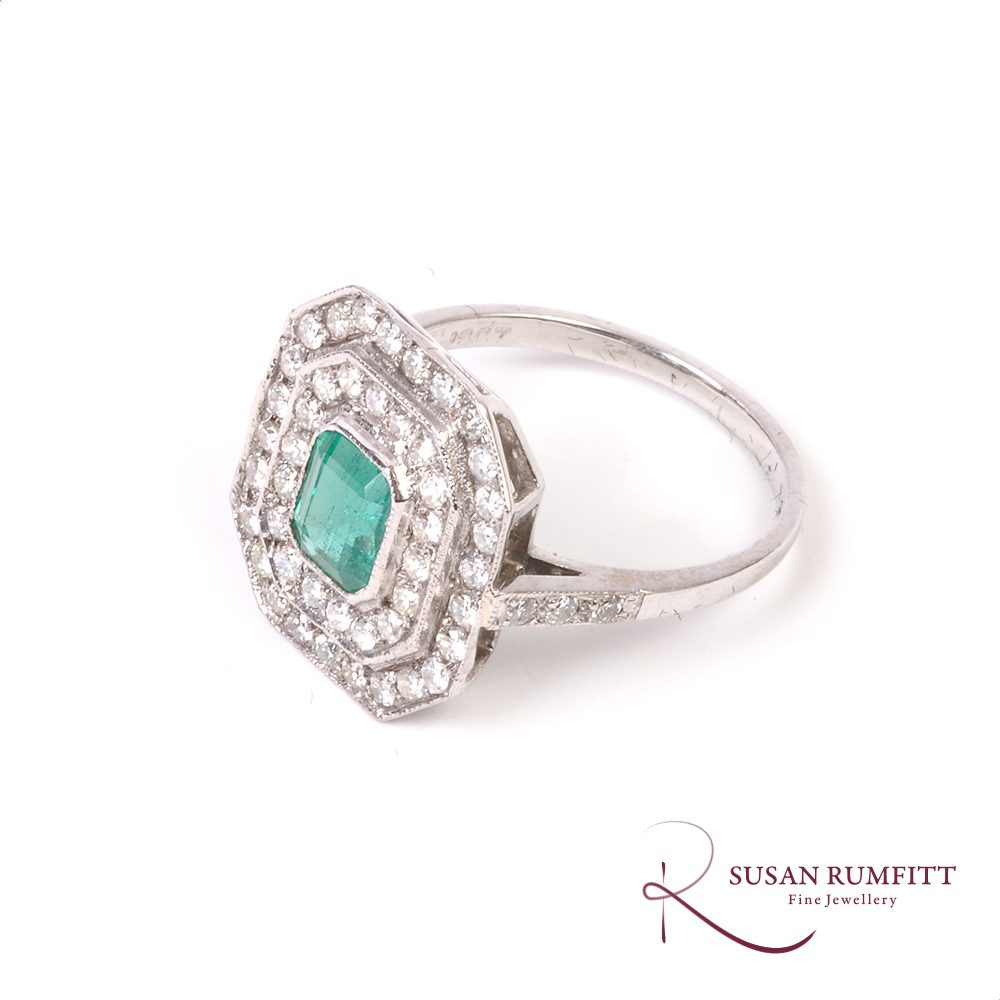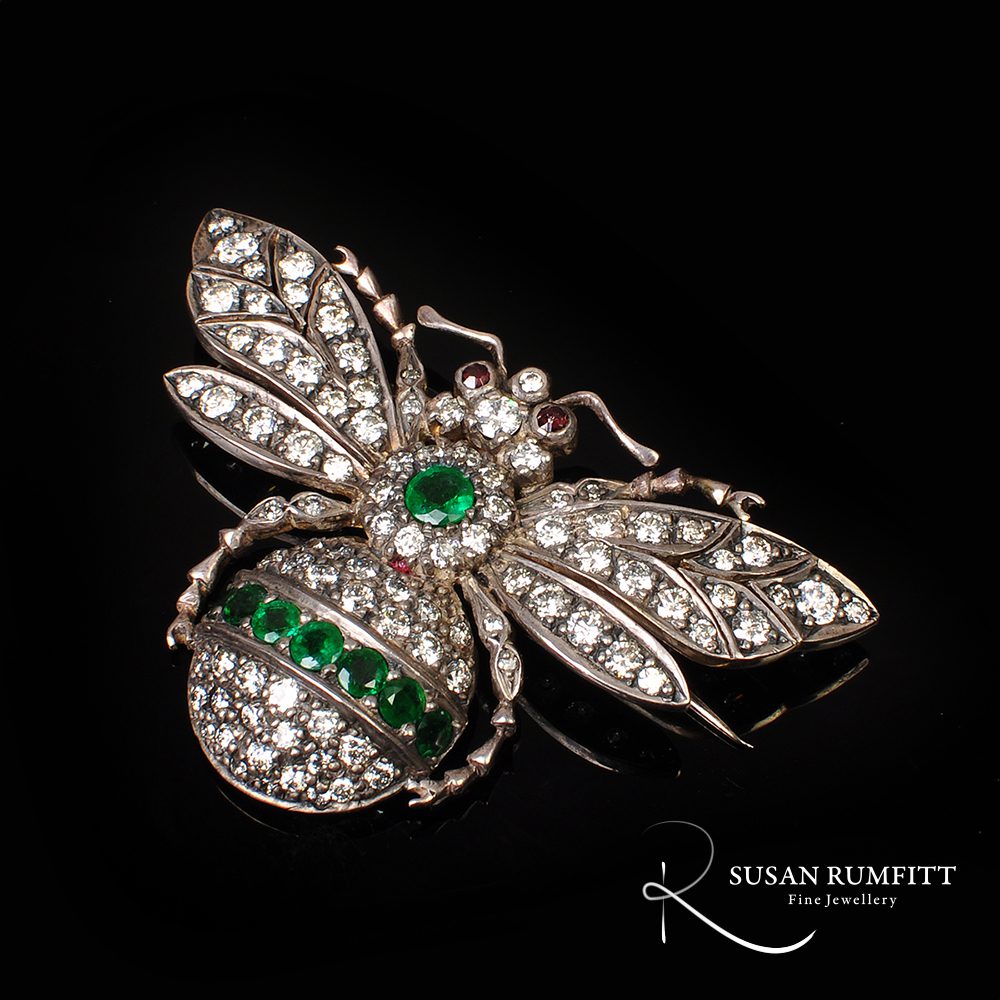History of Emeralds
The oldest known emerald mines are ‘Cleopatra’s’ emerald mines in Egypt. Mined from 2,000BCE, they were thought to be exhausted by around 300BCE. Cleopatra certainly favoured emeralds and their association with life and growth. She was said to have used them as propaganda, having them carved with her likeness and bestowed as gifts.
The Romans believed that green was a soothing and calming colour. Our old friend Pliny writes that gem cutters “have no better method of restoring their eyes than by looking at emeralds, its soft, green colour comforting and removing their weariness and latitude”. Perhaps this is why Emperor Nero used emeralds to protect his eyes while watching the gladiators. Charles V of France also had glasses made of beryl. Emerald is the form of beryl containing chromium and/or vanadium impurities which cause the green colour, although in ancient times most green stones were known as emerald. But the most spectacular emerald spectacles belonged to a Mughal emperor and were cut from a gem that would have weighed over 300 carats. Throughout the 19th century green tinted glasses, although not made of emerald, were believed to help certain eye conditions and even today green is thought to relieve eye strain and be a calming colour.
Emeralds in Europe and India
With Cleopatra’s mines exhausted it was the Spanish conquest of the Americas that brought a ready supply of emeralds to Europe and India.
When the Spaniards subjugated the Peruvian city Manta in 1537, they recorded that the locals worshiped the goddess Umina in the form of an emerald the size of an ostrich egg. Umina was removed from hiding on festival days to allow the populace to seek her favour by bringing her daughters, or small emeralds, back to her. The Spanish never found the legendary goddess but helped themselves to as many of her daughters as could be found.
Whilst the Spanish certainly enjoyed their access to emeralds, a large percentage of the finest gems went to Mughal India where the Islamic association of green with paradise and eternal salvation meant that emeralds were particularly desirable. Many of these wonderful gems were carved, embodying them with additional religious or amuletic properties. These same gems were then snapped up by western clients looking for a touch of the exotic East during the Deco period, having been reset by the likes of Cartier. A wonderful example of this is the brooch bought by Marjorie Merriweather Post featuring six large Mughal carved emeralds set with diamonds in a cascade.
In 1830 emeralds were discovered in the Ural Mountains in Russia and of course the tzars and tzarinas were quick to adorn themselves in the most magnificent specimens. However, the Russian royal families’ love of emeralds preceded their discovery in Siberia, with Catherine the Great owning some truly impressive emeralds. One such emerald was a hexagonal 107 carat gem that formed the centre piece of a parure given by Tzar Alexander II to Grand Duchess Vladimir on her wedding day. When the revolution came, the emeralds were smuggled out of Russia and reunited with the Grand Duchess. After her death they were sold by her then-impoverished son to Cartier, who reset and sold them as a sautoir to Edith Rockefeller McCormick. An eccentric heiress, she owned them for a mere decade before she passed away and they were sold back to Cartier. Reset again, this time as a tiara, the emeralds were sold to Barbara Hutton who wore them regularly until she sold them to Van Cleef & Arpels to fund one of her many divorces.
Unfortunately, Van Cleef re-cut some of the stones and set them individually. There is a rumour that some of them ended up in the Bulgari emerald suite that Richard Burton and other husbands bought for Elizabeth Taylor. As lovely as it would have been to have another link in the tale, regrettably the timeline proves this to be untrue and the gems are now lost forever.
Emerald engagement rings
Of course, being the gemstone of Venus, emeralds have been a popular choice for engagement rings. It was with an almost 20 carat emerald engagement ring, set simply in platinum by Cartier, that King Edward VIII proposed to Wallis Simpson and set in motion his abdication. Knowing that Jackie Bouvier had a love of emeralds, John F Kennedy chose an emerald and diamond ‘moi et toi’ ring when he asked her to be his wife. Interestingly, both Wallis and Jackie had their engagement rings adapted later; Wallis choosing to have hers re-set in yellow gold by Cartier, whilst Jackie added an asymmetric marquise cut diamond surround to hers.
Emeralds at Susan Rumfitt Fine Jewellery
Our gorgeous collection of May’s birthstone emeralds is available in our gallery in Harrogate, including the following pieces:






